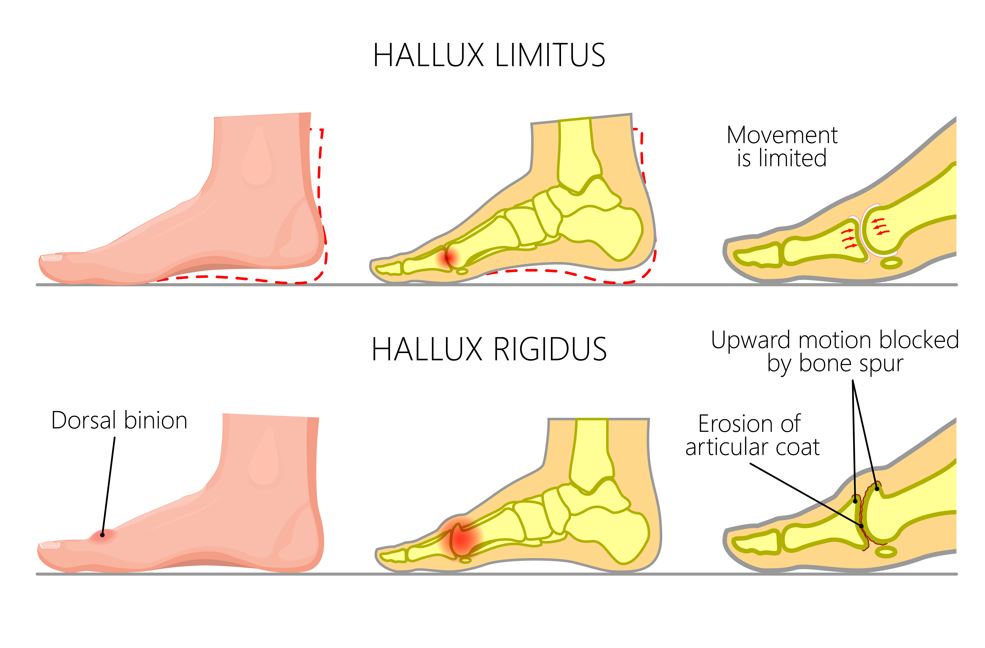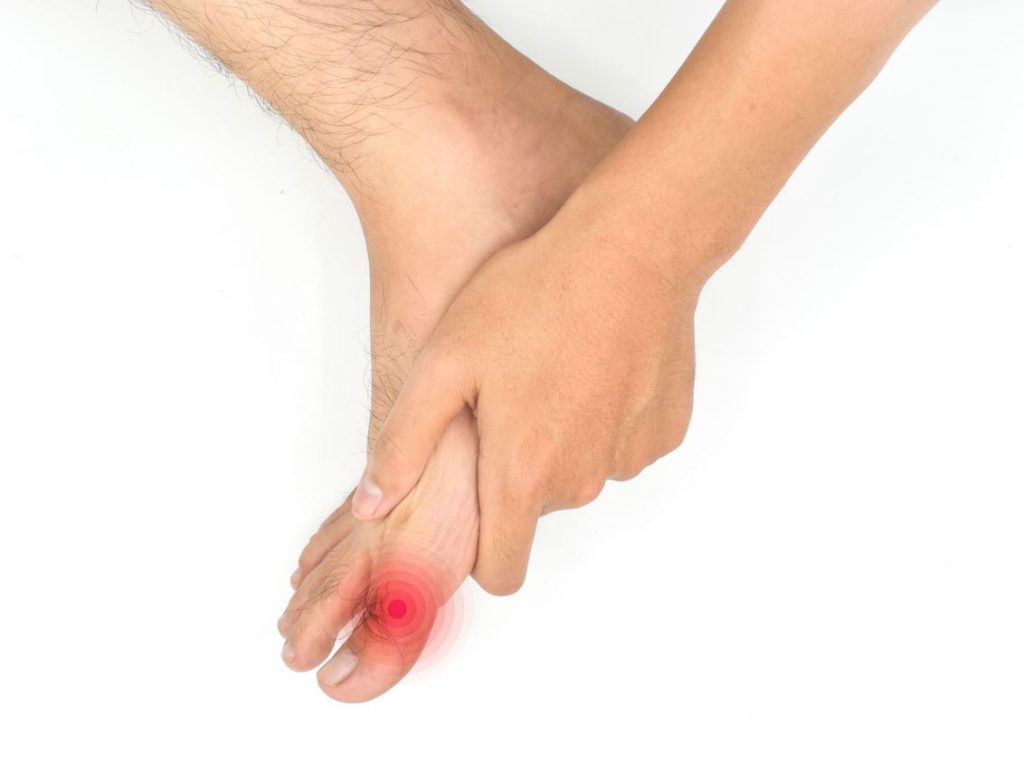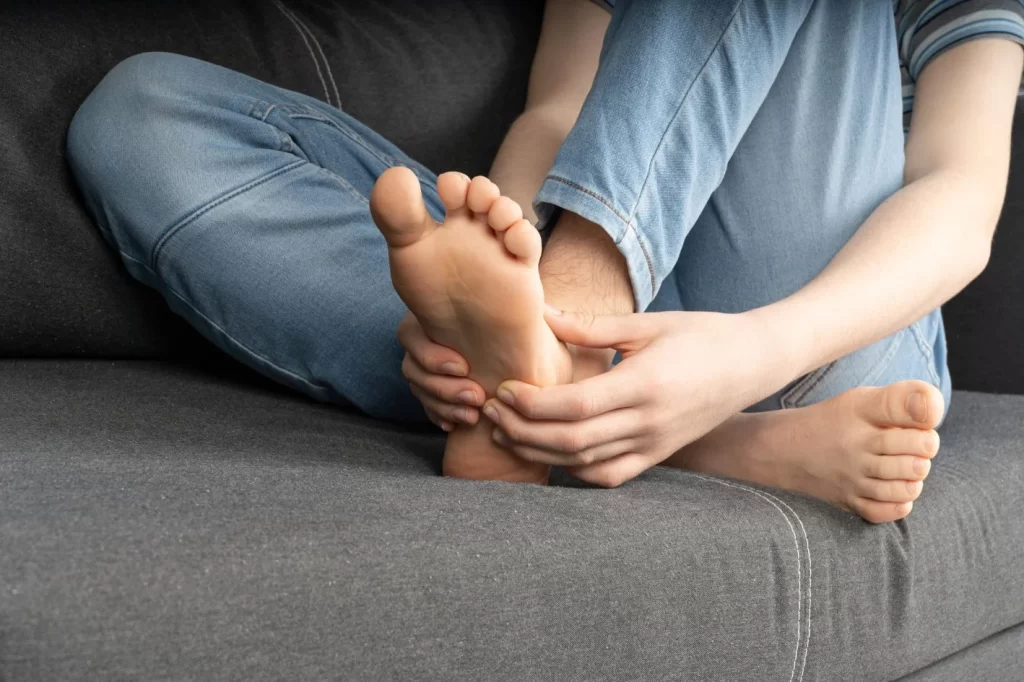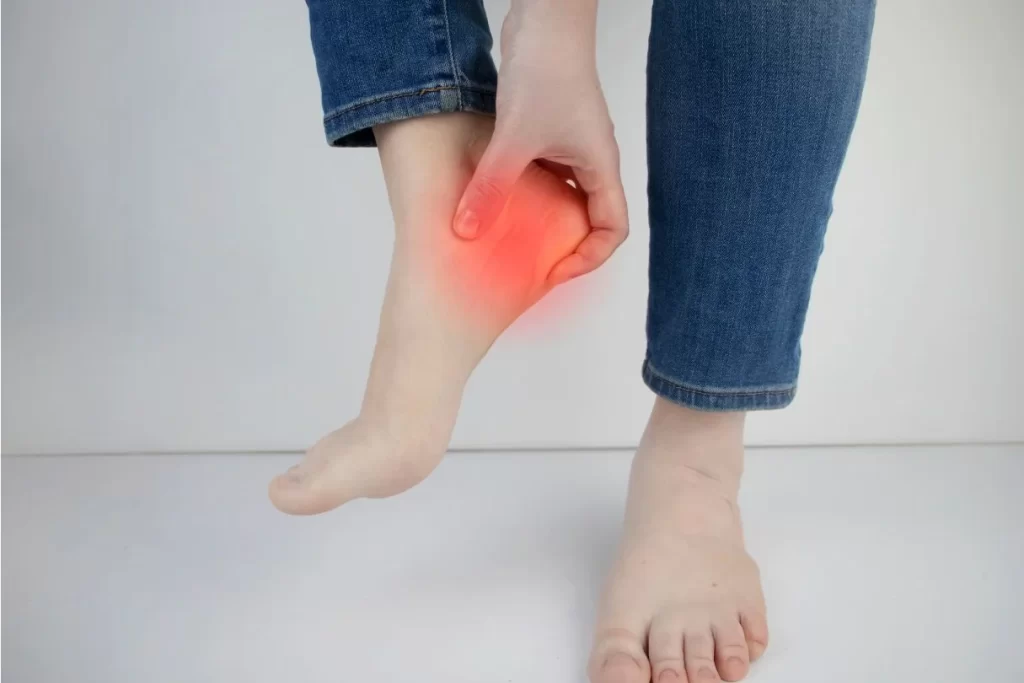What is Hallux Rigidus?
Hallux rigidus is the condition that causes stiffness and reduced range of motion of the big toe joint. Patients with this condition will have difficulty trying to bend the big toe and often experience pain at the big toe joint when walking or doing physical activity.
Theoretically, we need a minimum of 65 degrees of extension (bending upwards) of the big toe for normal gait patterns. Restriction at the big toe joint affects our propulsion significantly and causes problems to other parts of the foot.

Causes of Hallux Rigidus
Hallux rigidus is a degenerative condition. The restriction of movement is caused by the “wear and tear” of the cartilage within the big toe joint. This can either be an age-related degeneration or caused by repetitive stress or trauma to the big toe joint. Pain typically occurs due to impingement of bones in the big toe joint when the big toe is forcefully bent upwards when we walk or run.
Need Help? See Our Podiatrist Today
Risk Factors of Hallux Rigidus
Risk factors of hallux rigidus include:
- Flat feet (pes planus) or high arch feet (pes cavus)
- Calf tightness
- Previous injury to big toe joint
- Bunions

Signs and Symptoms of Hallux Rigidus
Signs and symptoms of hallux rigidus include:
- Unable to bend big toe upwards or downwards
- Morning stiffness
- Aching pain during and after activity
- Pain worsens with increased intensity of activity
- Presence of a bony lump at the top of the big toe joint
Conditions Associated with Hallux Rigidus
Restricted movement of the big toe joint will increase stress over the other parts or joints of our foot.
Conditions that can be caused by hallux rigidus include:
Hallux Rigidus Management in Singapore
The management of hallux rigidus usually aims to protect the big toe joint by reducing the need to bend when we walk or run.
Management options for hallux rigidus in Singapore include:
- Changing to footwear with a forefoot rocker
- Customised foot orthoses to maintain gait functions
- Extracorporeal shockwave therapy to alleviate pain and inflammation
- Surgery is only required if conservative management fails or in extremely severe cases
You May Also Like
You’re enjoying your daily walks and suddenly, a sharp stabbing or pulling pain hits right under your arch. You thought this would go away on its own. But day after day, the pain is turning your pleasant walk along the East Coast Park into a painful ordeal, literally. Now, at this stage, most people start to frantically Google, only to find different information and solutions, which aren’t always helpful. And that’s because arch pain can be due to multiple causes, considering that there are four layers of structures under the arch.
Understanding Your Foot Arch
The best way to appreciate the intricate structure of the foot is to look at it like a Roman arch. With its keystone in place, the structure is so stable that it can sustain heavy loads without collapsing.
Our foot arch is built similarly, except that it’s composed of bones, ligaments, tendons, and muscles. They work together to form that stable platform that supports our body weight and absorbs the shock of every step. Our arch also helps to bridge and transfer forces from the heel to the toe when we move. Therefore, if any component of this structure is compromised, the result is often pain when we walk.
Os Navicular Syndrome, also known as accessory navicular, is a condition that causes foot pain and discomfort around the inner arch area. A person suffering from the pain will have difficulty taking long walks or performing sports. If left untreated, it can cause long-term chronic pain and affect mobility. This condition is commonly misdiagnosed as posterior tibial tendonitis due to the similarities in the signs and symptoms. Therefore, in this article, we will list the common causes, signs and symptoms, and the treatment options typically available for Os Navicular Syndrome.


